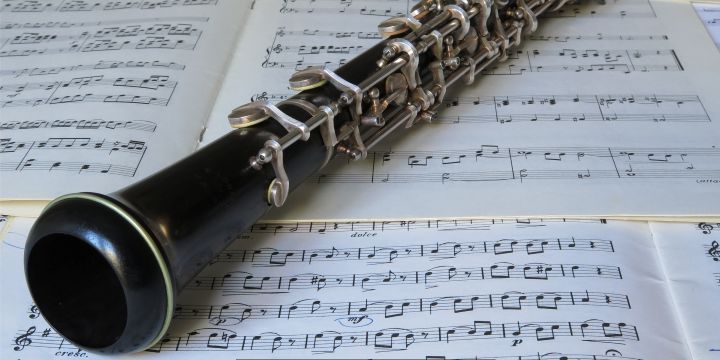The loose reed is a fundamental concept in the world of woodwind instruments, particularly for players of the clarinet, saxophone, and oboe. A reed is a thin strip of material, typically made from cane or synthetic materials, that vibrates to produce sound when air is blown through it. The term “loose reed” refers to a reed that does not fit snugly against the mouthpiece or the instrument’s body, which can lead to a variety of challenges for musicians.
Understanding the dynamics of a loose reed is essential for any woodwind player, as it directly impacts tone quality, intonation, and overall playability. When a reed is too loose, it can create an unstable sound, making it difficult for musicians to achieve the desired pitch and tone. This instability can result in a breathy sound or an inability to control dynamics effectively.
Additionally, a loose reed may cause the player to exert more air pressure than necessary, leading to fatigue and potential strain on the embouchure. Recognizing the signs of a loose reed and understanding its implications is crucial for musicians who wish to maintain their instrument’s integrity and enhance their performance.
Key Takeaways
- Understanding the Loose Reed:
- A loose reed can cause issues with tone, response, and pitch in wind instruments.
- It occurs when the reed does not vibrate properly against the mouthpiece.
- Techniques for Adjusting the Reed:
- Adjusting the reed’s position on the mouthpiece can help improve its stability.
- Using a reed knife or sandpaper can also help adjust the reed’s thickness and shape.
- Proper Reed Maintenance:
- Storing reeds in a reed case and rotating them regularly can help maintain their stability.
- Keeping reeds clean and dry can prevent warping and damage.
- Finding the Right Reed:
- Experimenting with different reed strengths and brands can help find the best fit for your instrument and playing style.
- Seeking advice from a music teacher or professional player can also help in finding the right reed.
- Tips for Playing with a Loose Reed:
- Adjusting your embouchure and air support can help compensate for a loose reed.
- Using proper breathing techniques and air support can also help improve the reed’s response.
- Common Mistakes to Avoid:
- Avoiding excessive force when adjusting the reed can prevent damage.
- Neglecting proper maintenance and care for reeds can lead to premature wear and tear.
- Seeking Professional Help:
- Consulting a music teacher or instrument technician can provide valuable guidance in dealing with a loose reed.
- Professional assistance can help in making precise adjustments and finding the right reed for your instrument.
- Benefits of Mastering the Loose Reed:
- Mastering the techniques for adjusting and maintaining reeds can improve overall playing experience and performance.
- Proper reed management can lead to better tone, response, and pitch control in wind instruments.
Techniques for Adjusting the Reed
Adjusting a loose reed requires a combination of skill and patience. One of the most common techniques involves carefully trimming the tip of the reed to achieve a better fit. Musicians often use a sharp knife or reed knife to make precise cuts, ensuring that they do not remove too much material at once.
This process requires a delicate touch, as even minor adjustments can significantly affect the reed’s performance. Players should take their time and test the reed frequently after each adjustment to find the optimal balance between tightness and playability. Another effective technique for adjusting a loose reed is to manipulate the cane itself.
By gently bending or shaping the reed, players can alter its response and fit within the mouthpiece. This method often involves soaking the reed in water to soften it before making adjustments. Once the desired shape is achieved, players should allow the reed to dry completely before testing it again.
This technique not only helps in achieving a better fit but also allows musicians to customize their reeds according to their playing style and preferences.
Proper Reed Maintenance
Proper maintenance of reeds is essential for ensuring longevity and optimal performance. Musicians should regularly inspect their reeds for signs of wear and tear, such as cracks or chips, which can compromise sound quality. After each playing session, it is advisable to rinse the reed with clean water to remove any residue from saliva or moisture buildup.
This simple step can prevent mold growth and prolong the life of the reed. In addition to cleaning, storing reeds correctly is vital for maintaining their condition. Musicians should avoid leaving reeds in direct sunlight or extreme temperatures, as these conditions can warp or damage them.
Instead, storing reeds in a protective case or a specialized reed holder can help preserve their shape and functionality. Regularly rotating between multiple reeds can also prevent excessive wear on any single reed, allowing players to enjoy consistent performance over time.
Finding the Right Reed
| Reed Type | Strength | Price | Durability |
|---|---|---|---|
| Vandoren Traditional | 2.5 | Medium | High |
| D’Addario Reserve | 3.0 | High | Medium |
| Rico Royal | 2.0 | Low | Low |
Finding the right reed is a crucial aspect of woodwind playing that can significantly influence a musician’s sound and comfort level. Reeds come in various strengths and styles, each designed to cater to different playing techniques and preferences. Musicians often experiment with different brands and types of reeds to discover which ones best suit their individual playing style.
Factors such as thickness, cut, and material can all impact how a reed responds during play. Players should consider their skill level and musical goals when selecting reeds. Beginners may benefit from softer reeds that are easier to play, while more advanced musicians might prefer stiffer reeds that offer greater control and projection.
Additionally, personal preferences regarding tone quality and responsiveness should guide musicians in their selection process. Ultimately, finding the right reed is a journey that requires exploration and experimentation, but it is one that pays off in improved performance and satisfaction.
Tips for Playing with a Loose Reed
Playing with a loose reed can be challenging, but there are several strategies that musicians can employ to navigate this issue effectively. First and foremost, players should focus on developing a strong embouchure. A well-formed embouchure provides stability and control over the reed, allowing for better sound production even when the reed is not perfectly fitted.
Practicing long tones and scales can help strengthen the embouchure and improve overall control. Additionally, musicians should pay attention to their breath support when dealing with a loose reed. Proper breath control can compensate for some of the instability caused by a loose fit.
Players should practice taking deep breaths from their diaphragm and maintaining steady airflow while playing. This technique not only enhances sound quality but also reduces strain on the embouchure, making it easier to manage a loose reed during performances.
Common Mistakes to Avoid
When dealing with loose reeds, musicians often fall into certain traps that can hinder their progress. One common mistake is over-adjusting the reed in an attempt to achieve an immediate fix. While it may be tempting to make drastic changes in hopes of improving performance, this approach can lead to further complications and may even render the reed unusable.
Instead, players should make small adjustments gradually and test the reed frequently to gauge its response. Another mistake is neglecting proper maintenance practices. Many musicians underestimate the importance of cleaning and storing their reeds correctly, leading to premature wear or damage.
Failing to rinse reeds after use or exposing them to extreme conditions can result in compromised sound quality over time. By prioritizing maintenance routines and being mindful of storage conditions, players can extend the life of their reeds and maintain optimal performance levels.
Seeking Professional Help
For musicians struggling with loose reeds or other related issues, seeking professional help can be invaluable. Music teachers or experienced players can provide guidance on proper techniques for adjusting reeds and maintaining them effectively. Additionally, they may offer insights into selecting the right reeds based on individual playing styles and preferences.
In some cases, consulting with a professional repair technician may be necessary if a musician encounters persistent problems with their reeds or instrument setup. These experts possess specialized knowledge about woodwind instruments and can diagnose issues that may not be immediately apparent to players. By seeking professional assistance, musicians can gain valuable insights that enhance their playing experience and overall understanding of their instrument.
Benefits of Mastering the Loose Reed
Mastering the art of playing with a loose reed offers numerous benefits for woodwind musicians. First and foremost, it fosters greater adaptability and resilience in playing techniques. Musicians who learn to navigate challenges associated with loose reeds develop problem-solving skills that enhance their overall musicianship.
This adaptability translates into improved performance in various musical settings, whether in solo performances or ensemble work. Furthermore, mastering loose reeds encourages players to cultivate a deeper understanding of their instrument’s mechanics. By experimenting with adjustments and maintenance techniques, musicians gain insights into how different factors influence sound production and playability.
This knowledge not only enhances their technical skills but also enriches their musical expression, allowing them to explore new tonal possibilities and styles with confidence. In conclusion, understanding loose reeds is an essential aspect of woodwind playing that requires attention to detail and ongoing practice. By employing effective adjustment techniques, maintaining reeds properly, finding the right fit, and developing strong playing habits, musicians can overcome challenges associated with loose reeds while reaping the rewards of improved performance and musicality.
Through dedication and exploration, woodwind players can master this aspect of their craft, leading to greater satisfaction in their musical journey.
FAQs
What is a loose reed in the context of playing the oboe?
A loose reed refers to an oboe reed that has become too open or flexible, resulting in a lack of control and stability when playing the instrument.
What causes a reed to become loose?
A reed can become loose due to changes in temperature and humidity, as well as general wear and tear from playing. Additionally, improper storage and handling of the reed can also contribute to it becoming loose.
How does a loose reed affect oboe playing?
A loose reed can make it difficult for the oboist to produce a clear and focused sound, as well as control the dynamics and articulation of the music. It can also lead to pitch and tuning issues.
How can a loose reed be fixed?
To fix a loose reed, the oboist can carefully adjust the reed’s opening and shape using specialized tools such as a reed knife or plaque. It may also be necessary to soak the reed in water and gently manipulate it to restore its proper shape and stability.




